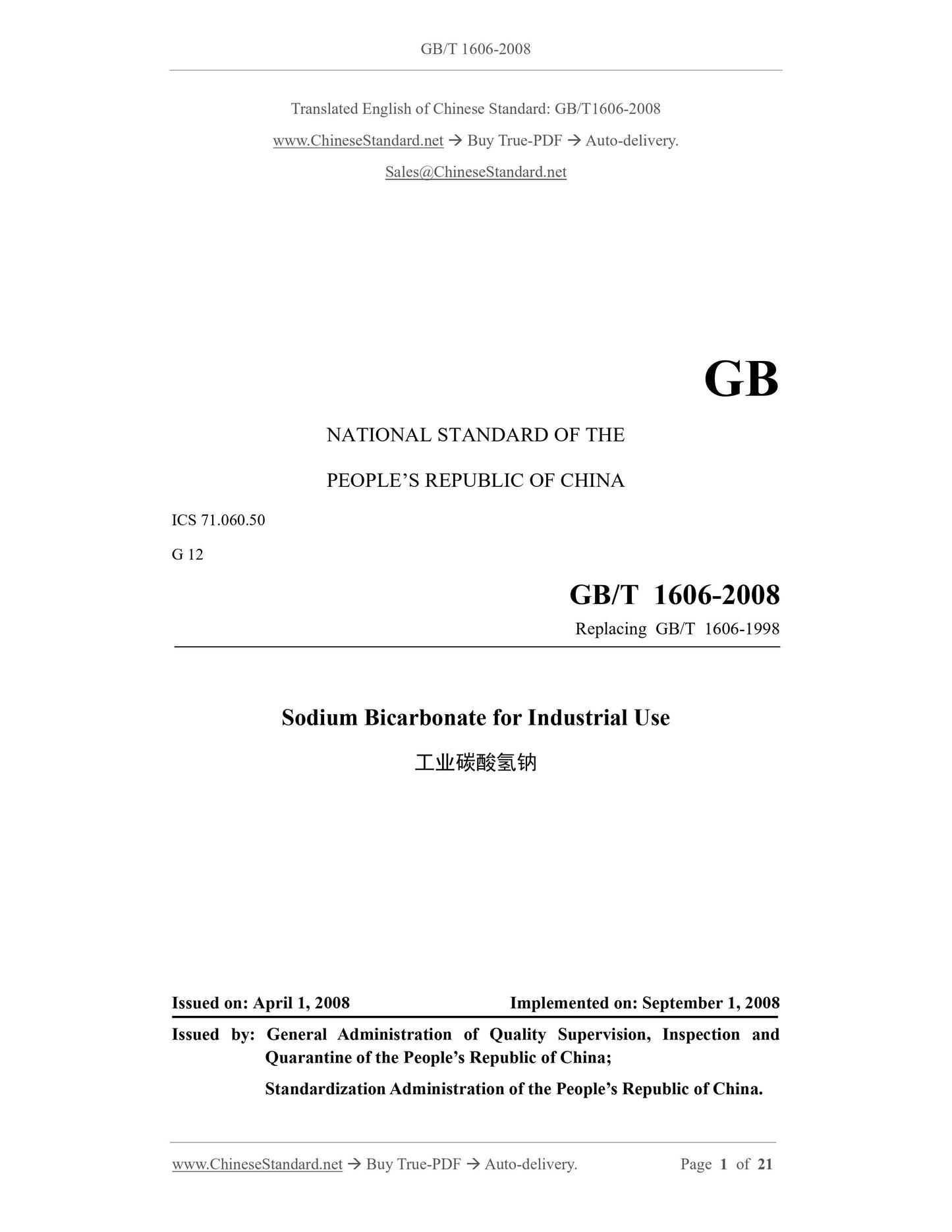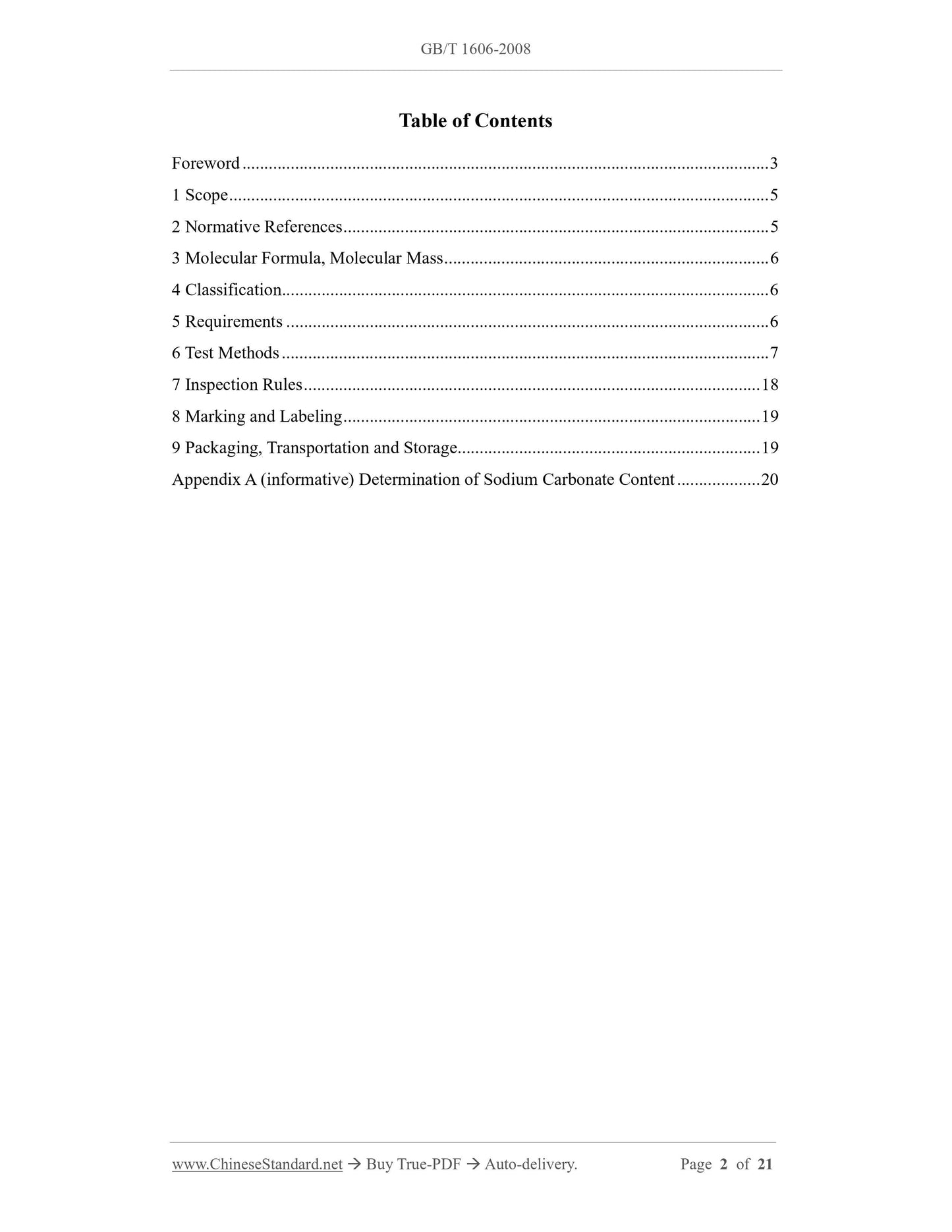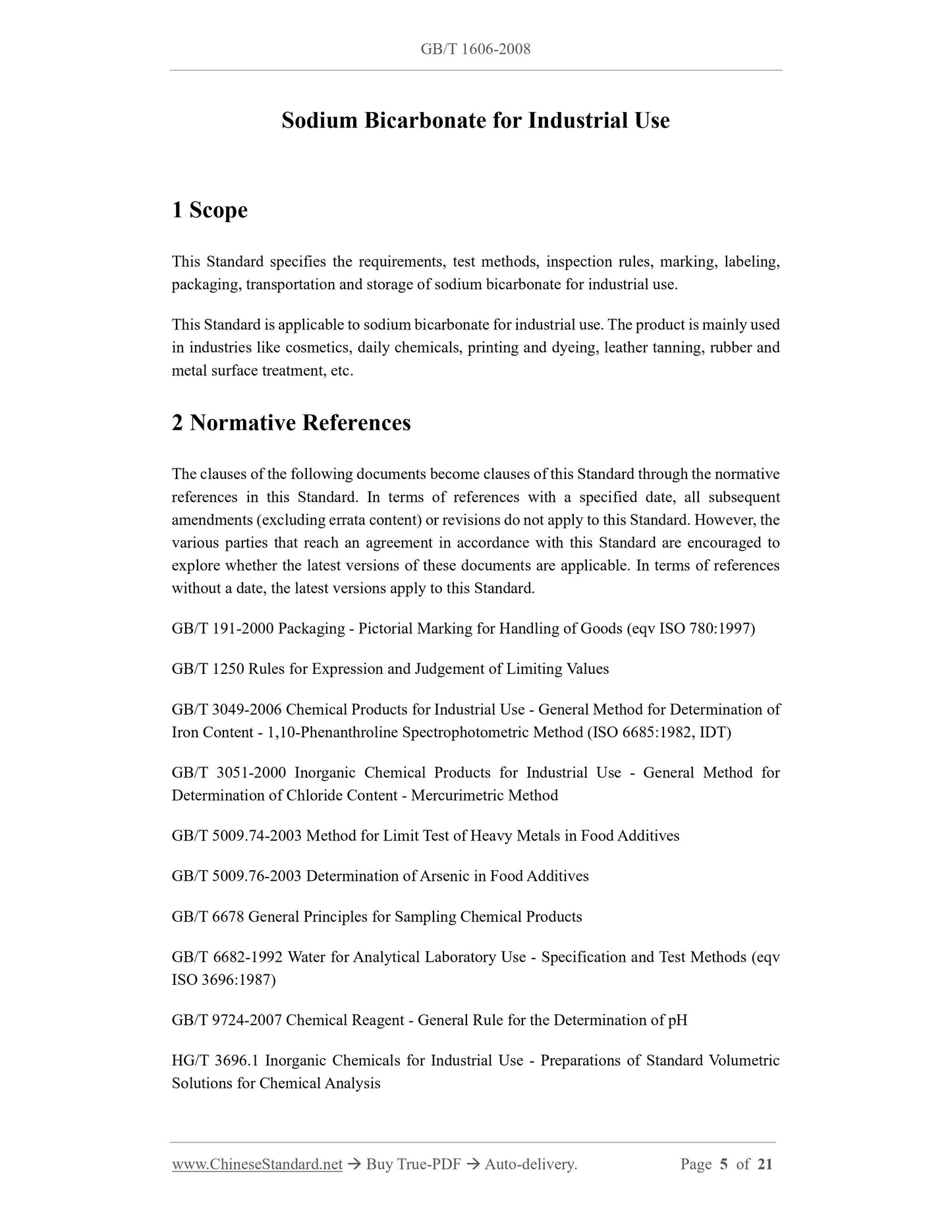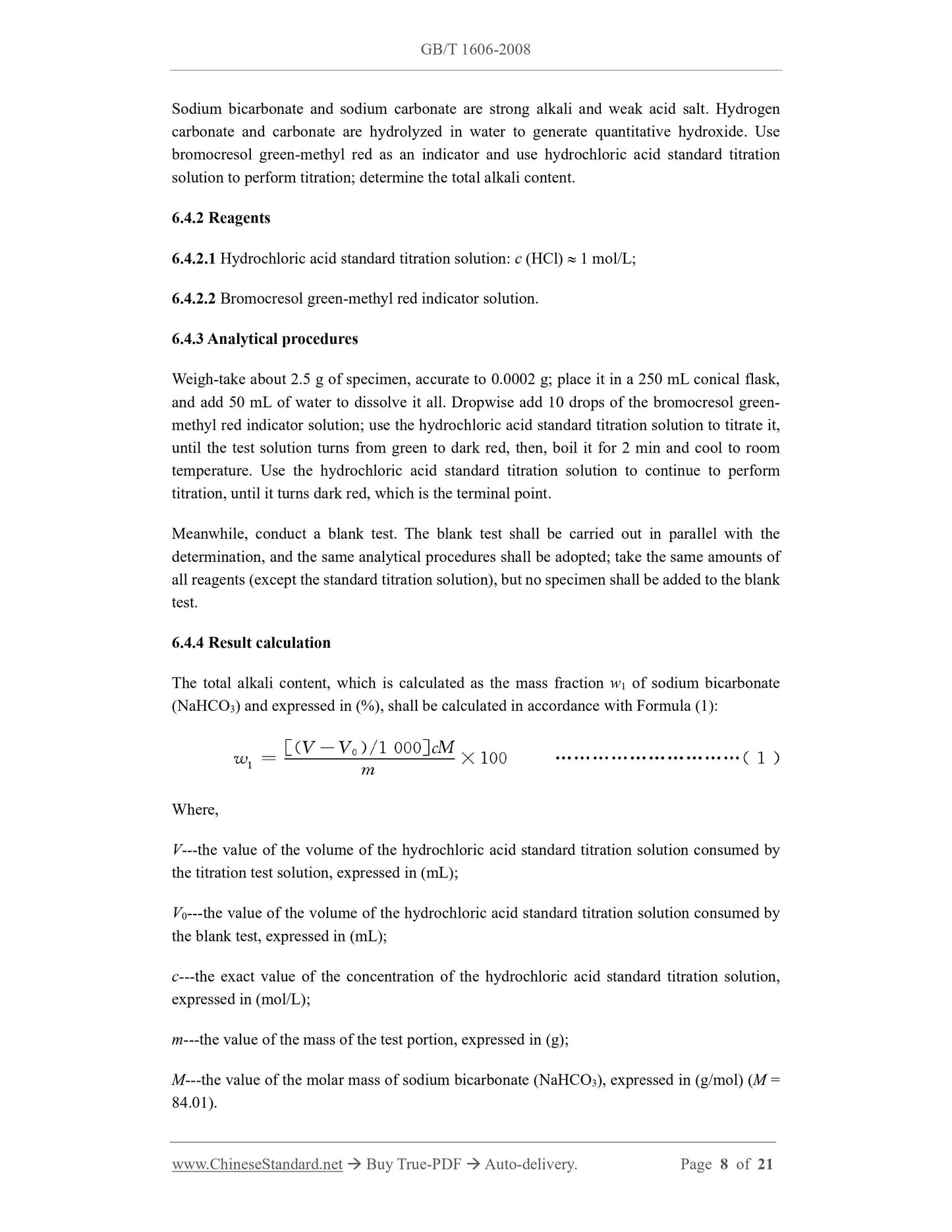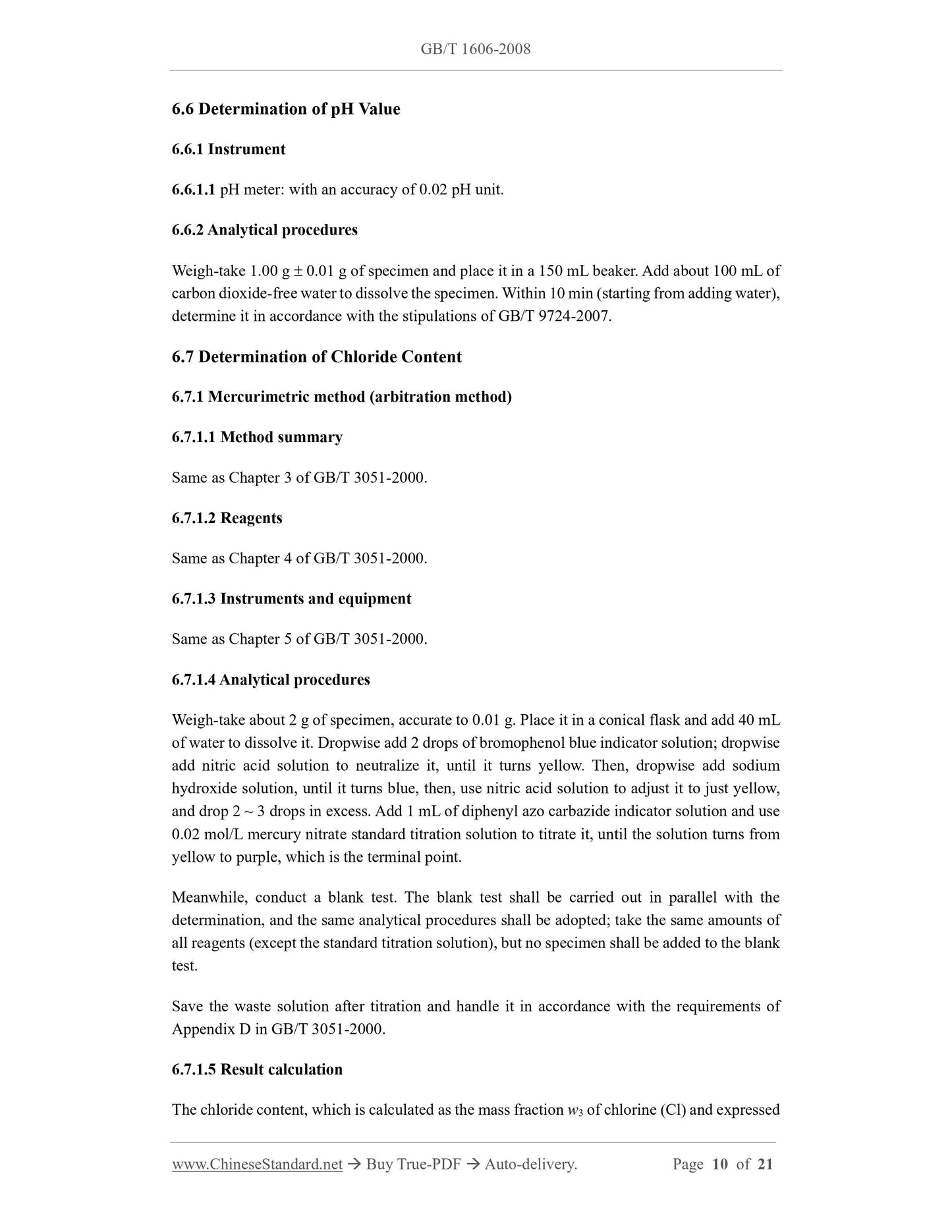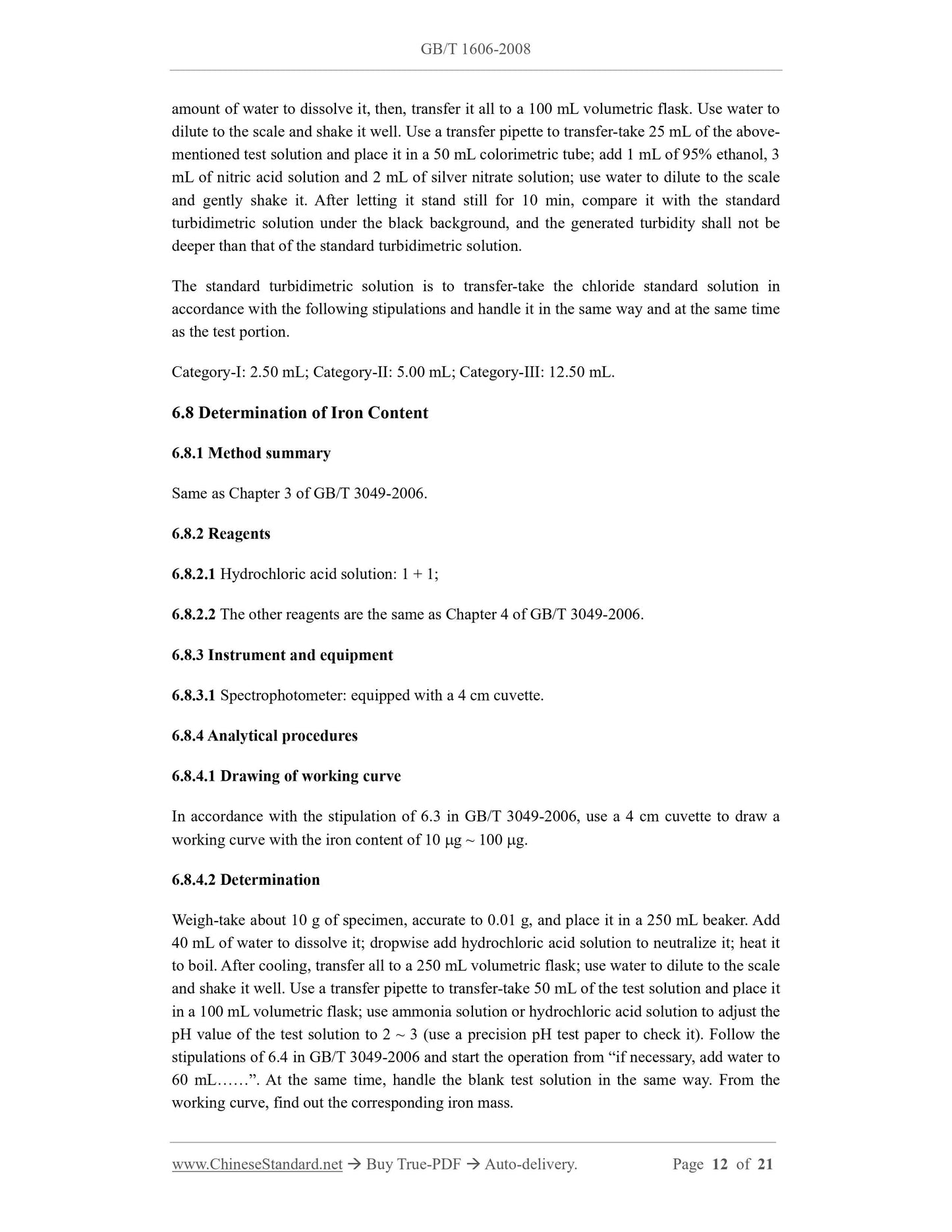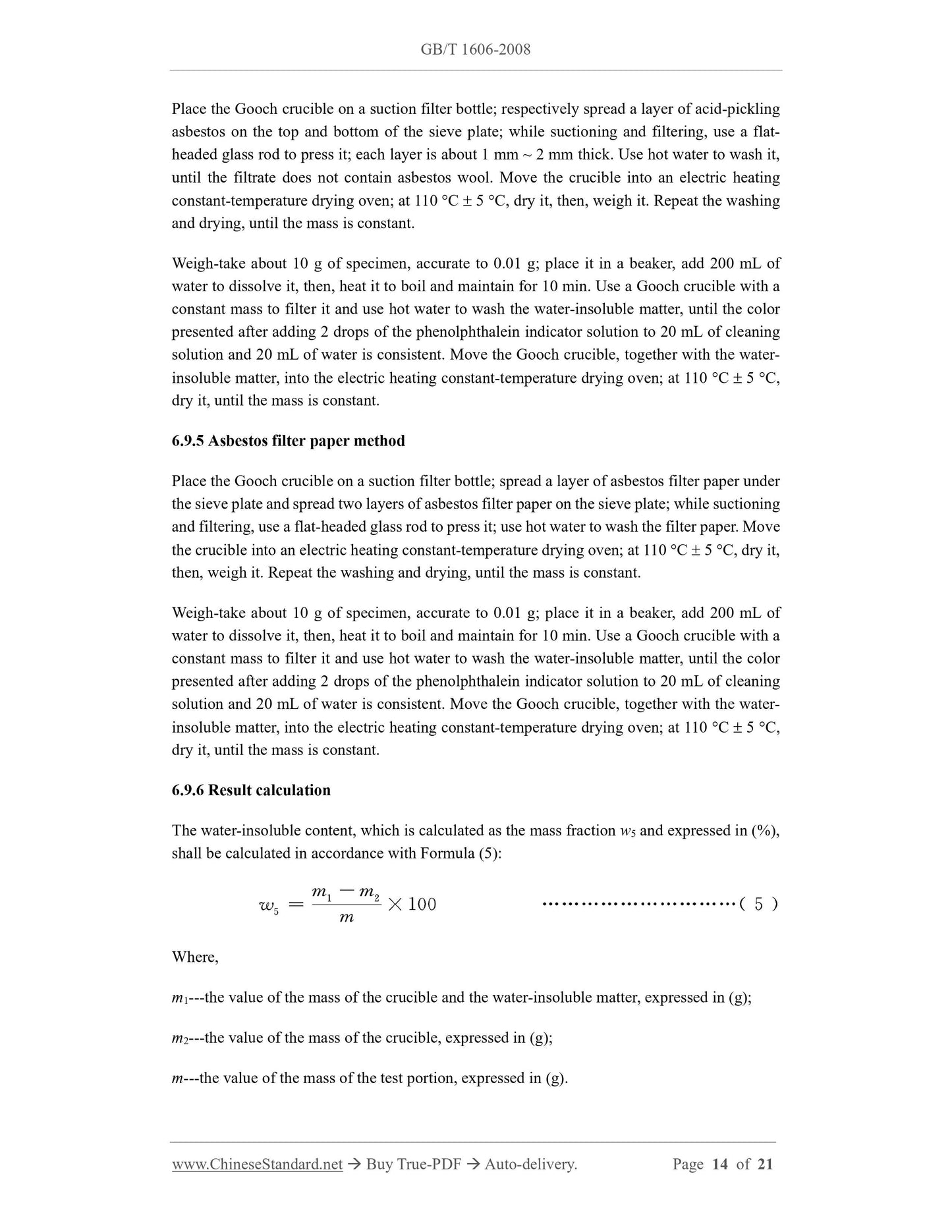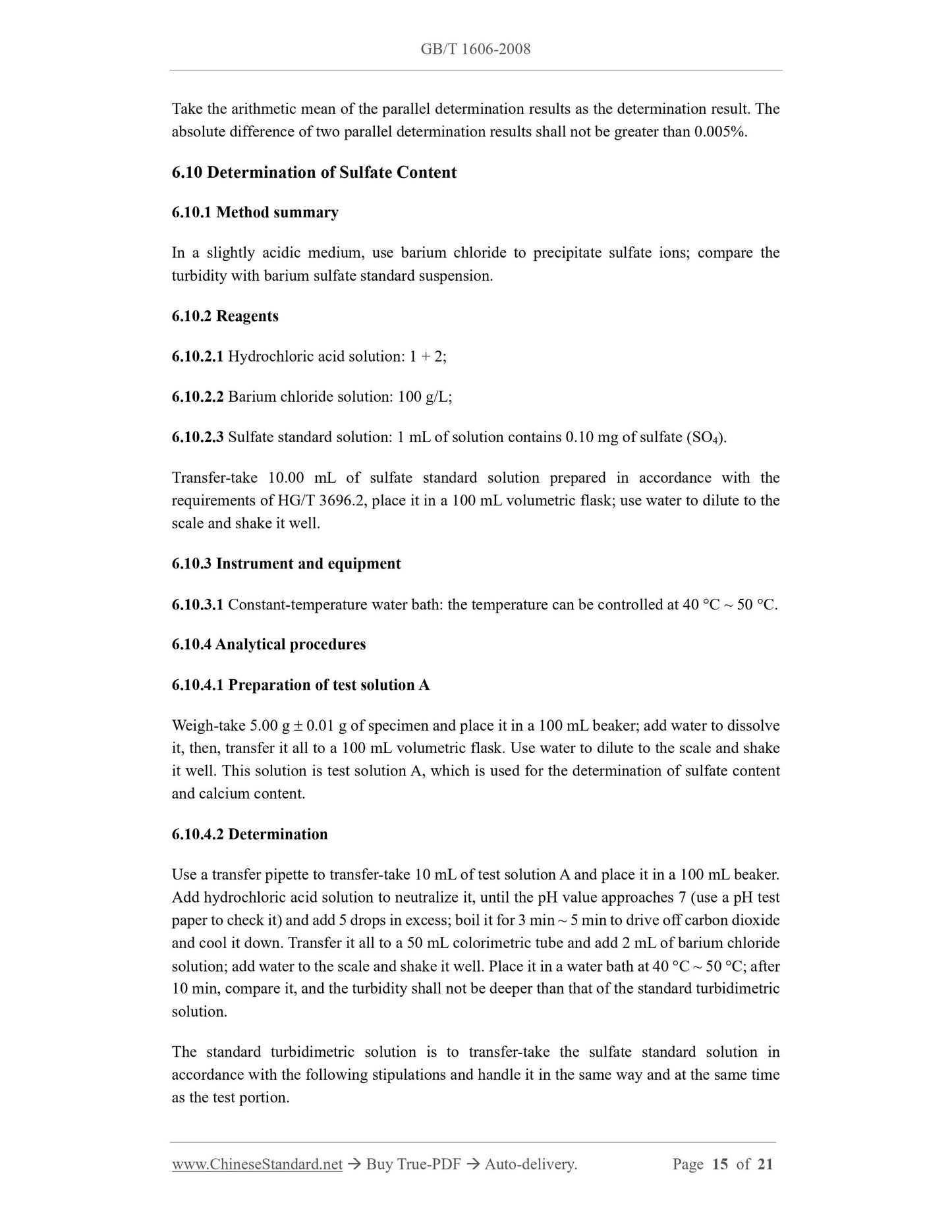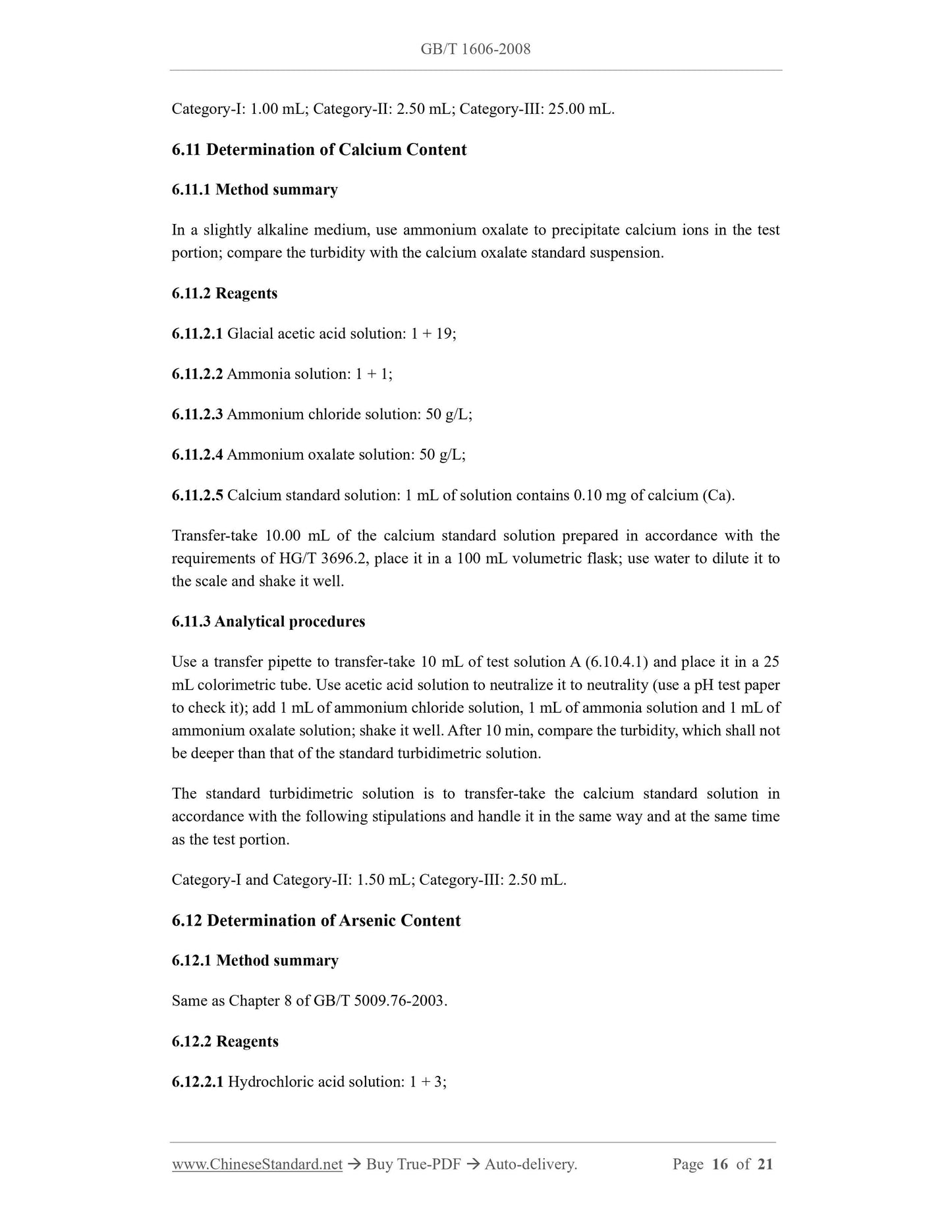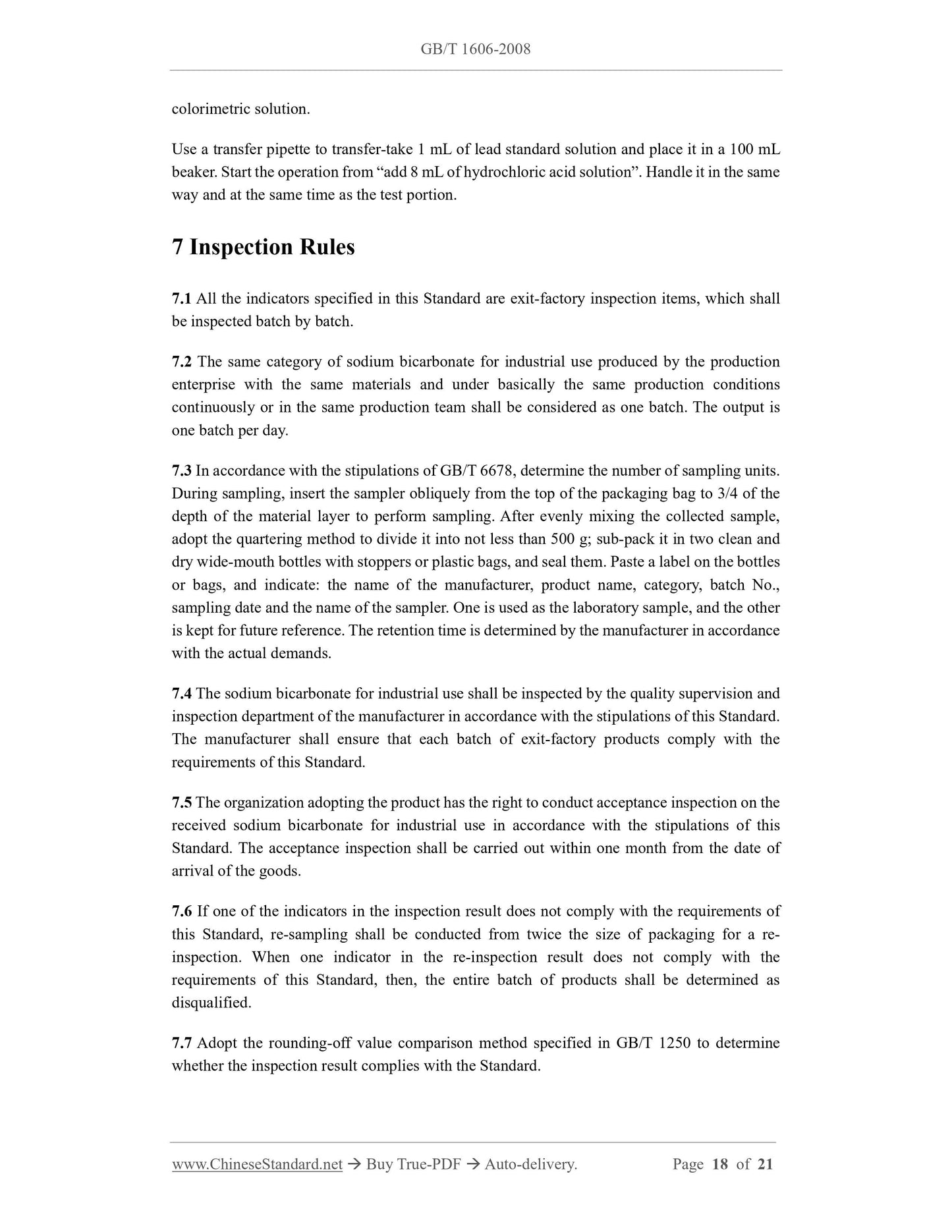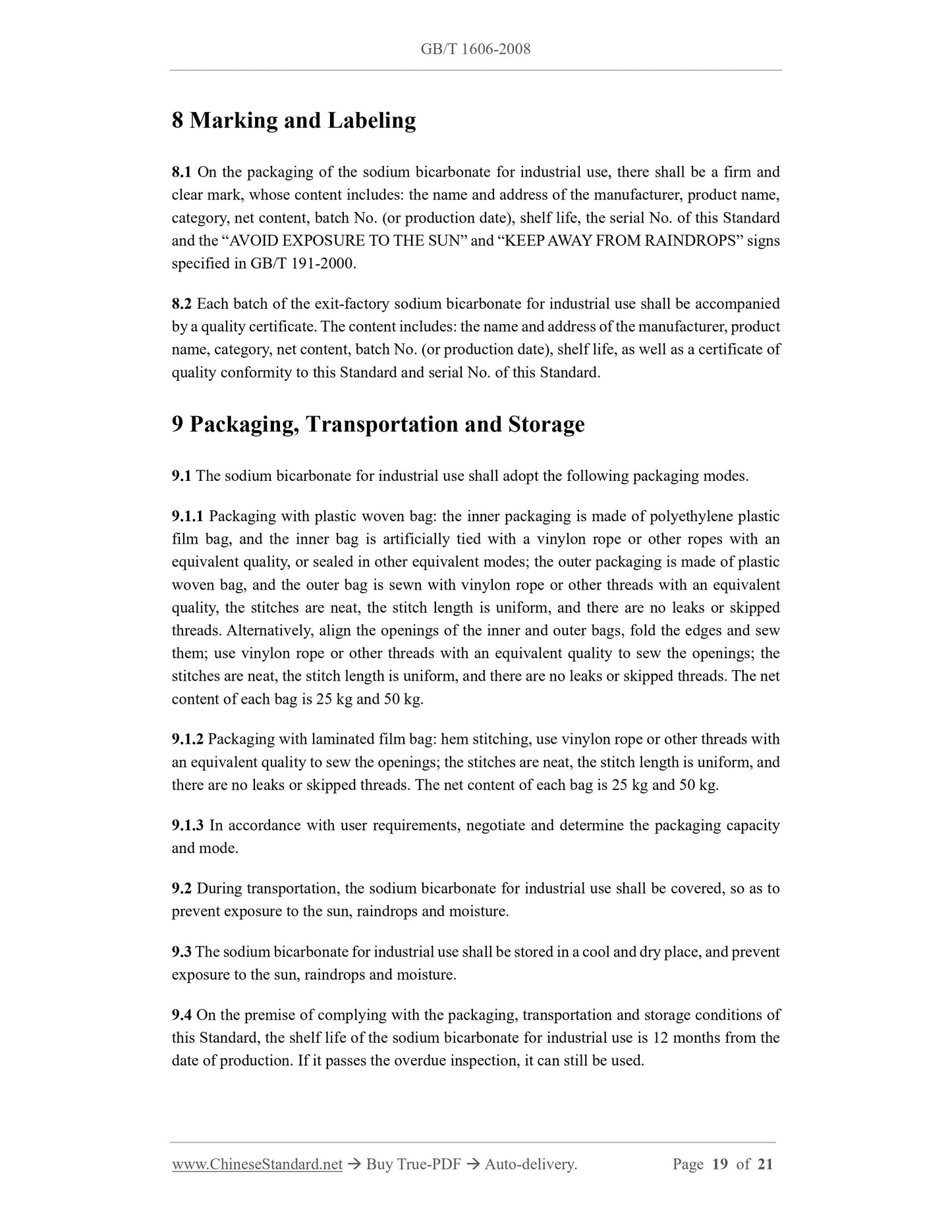1
/
of
11
www.ChineseStandard.us -- Field Test Asia Pte. Ltd.
GB/T 1606-2008 English PDF (GB/T1606-2008)
GB/T 1606-2008 English PDF (GB/T1606-2008)
Regular price
$160.00
Regular price
Sale price
$160.00
Unit price
/
per
Shipping calculated at checkout.
Couldn't load pickup availability
GB/T 1606-2008: Sodium bicarbonate for industrial use
Delivery: 9 seconds. Download (and Email) true-PDF + Invoice.Get Quotation: Click GB/T 1606-2008 (Self-service in 1-minute)
Newer / historical versions: GB/T 1606-2008
Preview True-PDF
Scope
This Standard specifies the requirements, test methods, inspection rules, marking, labeling,packaging, transportation and storage of sodium bicarbonate for industrial use.
This Standard is applicable to sodium bicarbonate for industrial use. The product is mainly used
in industries like cosmetics, daily chemicals, printing and dyeing, leather tanning, rubber and
metal surface treatment, etc.
Basic Data
| Standard ID | GB/T 1606-2008 (GB/T1606-2008) |
| Description (Translated English) | Sodium bicarbonate for industrial use |
| Sector / Industry | National Standard (Recommended) |
| Classification of Chinese Standard | G12 |
| Classification of International Standard | 71.060.50 |
| Word Count Estimation | 12,199 |
| Date of Issue | 2008-04-01 |
| Date of Implementation | 2008-09-01 |
| Older Standard (superseded by this standard) | GB/T 1606-1998 |
| Quoted Standard | GB/T 191-2000; GB/T 1250 |
| Adopted Standard | �������� 2156-1976 (1992), NEQ |
| Regulation (derived from) | National Standard Approval Announcement 2008 No.5 (Total No.118) |
| Issuing agency(ies) | General Administration of Quality Supervision, Inspection and Quarantine of the People's Republic of China, Standardization Administration of the People's Republic of China |
| Summary | This standard specifies the requirements for industrial sodium bicarbonate, test methods, inspection rules, signs, labels, packaging, transport and storage. This standard applies to industrial sodium bicarbonate. The products are mainly used in cosmetics, cosmetic, dyeing, tanning, rubber and metal surface treatment industry. |
Share
